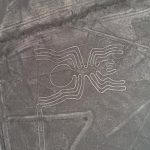The new Japanese H3 rocket should replace the previous model reducing costs. But Japan’s space agency, partnering with Mitsubishi Heavy Industries on the project, must first test the reliability of the new technology after the first launch failed.
Tokyo () – As in the 1950s and 1960s, the space race is once again at the center of global technological competition, in which not only government space agencies but also private companies participate. It’s a developing market, but Tokyo is determined to play a leading role with the new H3 rockets.
The Japanese space agency, known by the acronym JAXA, has launched an ambitious technological and infrastructure development program in collaboration with Mitsubishi Heavy Industries, with the aim of expanding the country’s presence in the sector and consolidating its position of power. aerospace.
The timing is extremely propitious for Tokyo, and not just because of increased demand. Since Russia started the war in Ukraine and isolated itself internationally, it has left a big gap in the space market. “We are getting double the number of inquiries about our services,” said Iwao Igarashi, general manager of Mitsubishi Heavy Industries in the aerospace and defense sector.
The core of this collaboration is the H3 rockets. It is the first generation of Japanese rockets to enter service in more than 22 years, and is expected to replace the H2A series that was introduced in 2001. Compared to its predecessor, known for its reliability (only one of 46 launches failed), the H3 rocket should have a slightly higher payload capacity, but mostly lower costs. Indeed, the launch of an H2A requires an outlay of approximately 90 million dollars, a price that, compared to the 67 million needed by SpaceX’s Falcon-9, is not competitive at all. The new H3, on the other hand, have compressed costs, so a launch should be around 50 million dollars. But for the new vectors to reach the market, JAXA and Mitsubishi must be able to prove their reliability with test launches.
And here the problems for Japan begin. Last Friday was to be held at the Tanegashima base the first launch of an H3, to put into orbit a satellite equipped with sensors for military use, but created to monitor natural disasters from space. In the days leading up to launch, there was a lot of nervousness related to the new electronics and the new rocket engine. Concerns that turned out to be justified: The test was not completed because, after igniting the main vector, an anomaly prevented the side thrusters from firing and lifting the rocket.
Masahi Okada, Jaxa’s project manager, suggested that the problem is not related to the engine but rather to the rocket’s electronics. However, okada refused to consider it a failure, stating that he hoped it would be possible to fix the bug and retry the launch before March 10, given that the H3 program is already experiencing significant schedule delays. The first launch should have taken place in March 2021, but technical complications related to some rocket components pushed the date back nearly two years.











